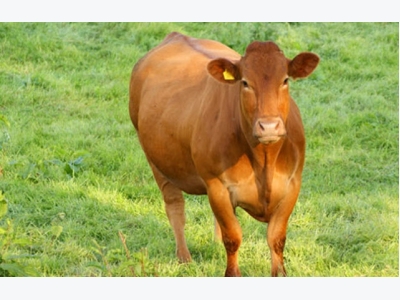Dealing with clostridial diseases (2)

Identifying and preventing botulism and tetanus.
As we learnt last week, animals that die after being sick for a short time or are found dead without an obvious cause are likely to be suffering from a clostridial disease spread by germs in soil, sewage and water or in the gut of animals. There are three main categories of this disease: sudden death, which may or may not be accompanied by ‘gut signs’ (such as pulpy kidney), sudden death accompanied by swollen legs and head, (such as blackquarter), and conditions that produce nervous symptoms. We discussed the first two in the last issue; this week we look at the final category, caused by the poisons created by clostridial bacteria.
Tetanus
Animals affected are horses, sheep, goats, cattle and dogs. The disease develops one to three weeks after a wound or an incorrectly performed procedure, such as castration. Signs include the third eyelid moving across the eye, and increasing stiffness. The animal soon has difficulty walking. Paralysis, with spasms of the legs, head and neck, follows. Death occurs within one to three days.
- Prevention – Good wound management and vaccination.
Botulism
Animals affected: cattle, sheep, goats, chickens, horses and donkeys.
Contributing factors are contaminated feed and water (dead rats and birds in the feed or water) and pica – animals chewing or licking bones or rocks, especially during the dry season and in areas where there’s a phosphorus deficiency in the soil. Signs of botulism, or lamsiekte, in live animals include:
- Partial or total paralysis.
- The tongue may hang out of the mouth, but the animal will still try to eat. As they can’t swallow, be carefully when giving them water by hand. If you’re careless, water may get into the lungs.
- Cattle may die suddenly from pneumonia, or stop breathing because of the paralysis.
- Sheep may have an arched back and a drooping head and neck.
- Prevention – Phosphorus supplementation in licks; clean feed and water; vaccination; removing carcasses from the veld.
Diagnosis
Clostridial diseases can be confused with one another, as well as with anthrax, toxic plant poisoning, snakebites, poisoning by chemicals, rabies, three-day stiffsickness, redwater, heartwater, infection of the brain, tick paralysis, twin lamb disease (domsiekte) and tapeworm cysts in the brain. The only way to really determine which disease you’re dealing with is by doing a necropsy, which may involve lab tests to identify the bacteria and toxins involved. Samples must be collected as soon as possible after death. Ask your animal health technician or state vet for help.
Treatment
Because all clostridial diseases start suddenly with few signs, treatment is nearly always too late to cure the animal. But antibiotics may help. Tetanus and botulism are difficult to treat. In the early stages, treatment with an antitoxin against the disease may save the animal, but it has to be given as soon as signs are noticed and is not always at hand when needed.
Related news
 Grass Silage: what you put in is what you get out
Grass Silage: what you put in is what you get out With pasture grass being a dairy operation’s cheapest source of protein and energy, good pasture management is a key profit driver
 Making the most of grass silage
Making the most of grass silage Good pasture managers apply appropriate fertiliser treatment, based on regular soil and grass sampling, analyses and recommendations.
 Making grass silage while the sun shines
Making grass silage while the sun shines Grass silage provides better quality silage than hay and is less weather-dependent, as rain can set the hay-making process back